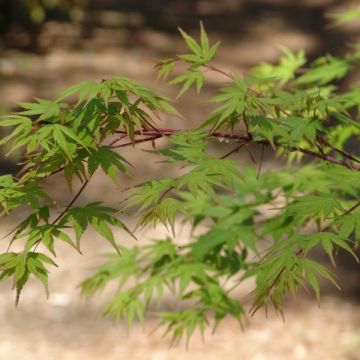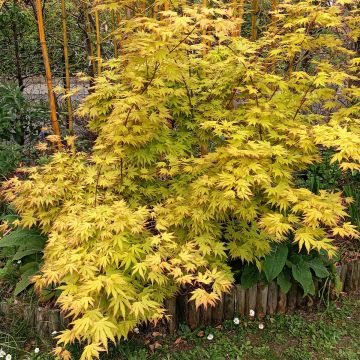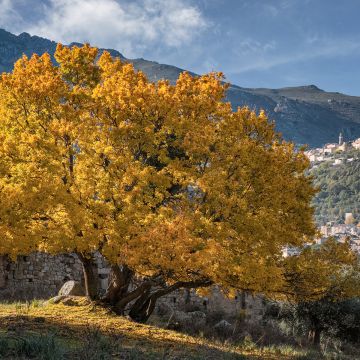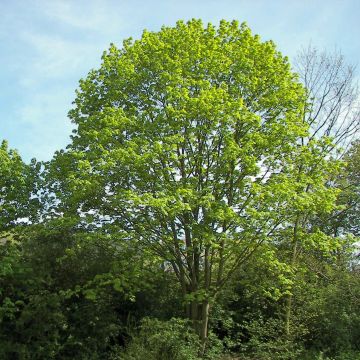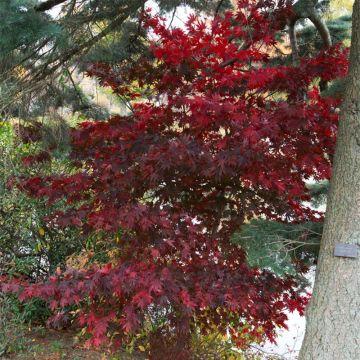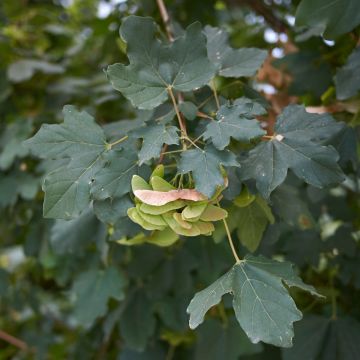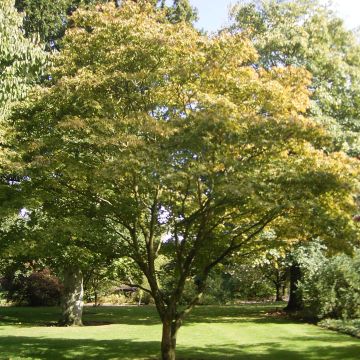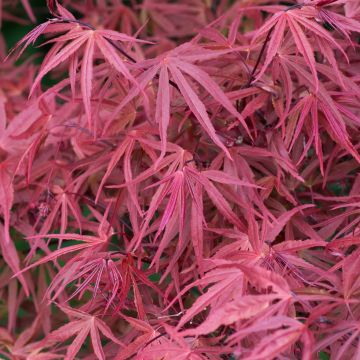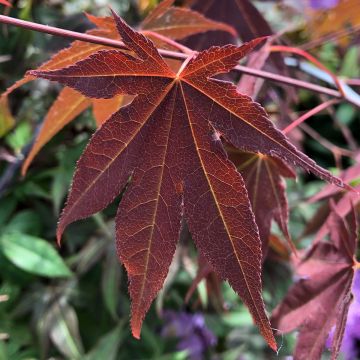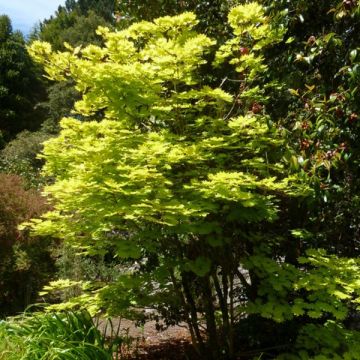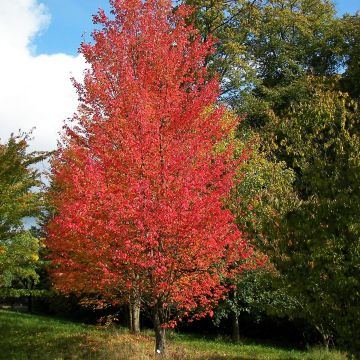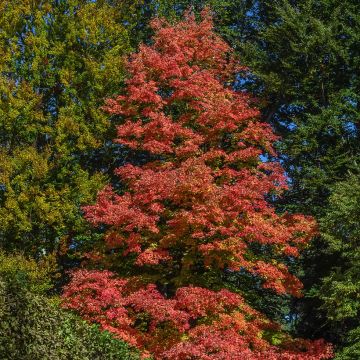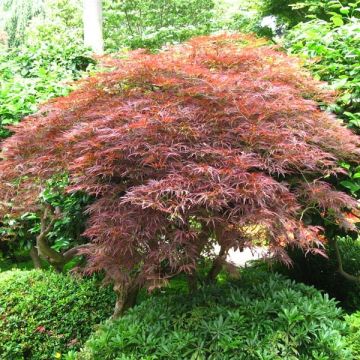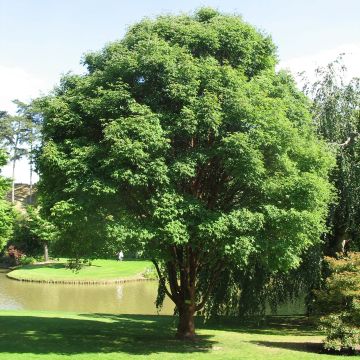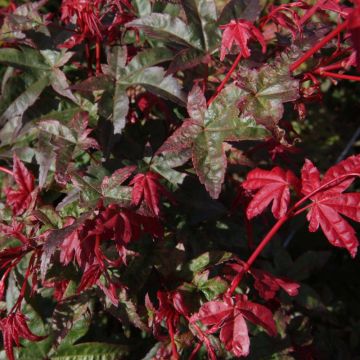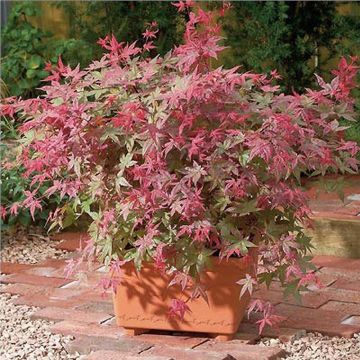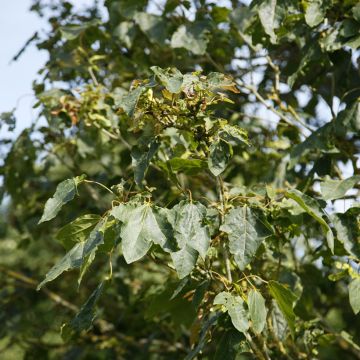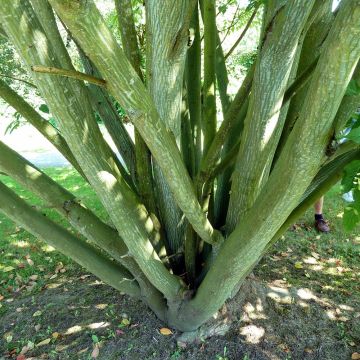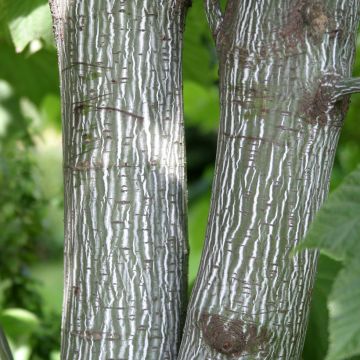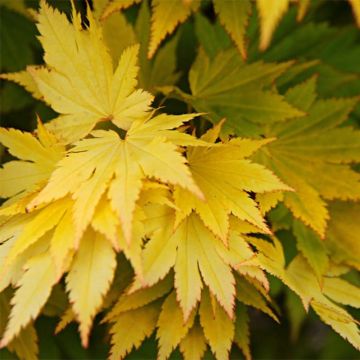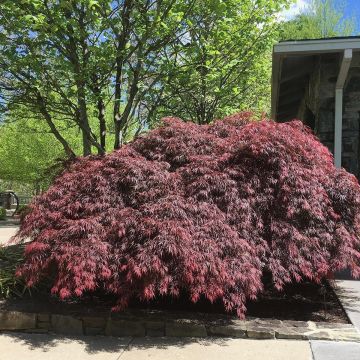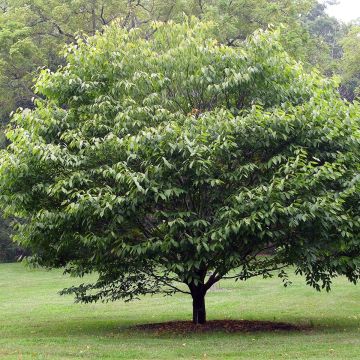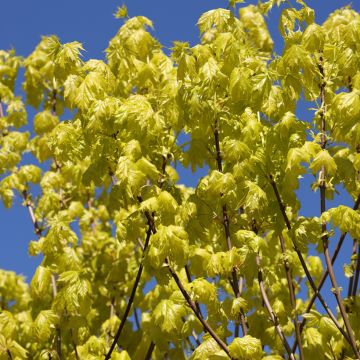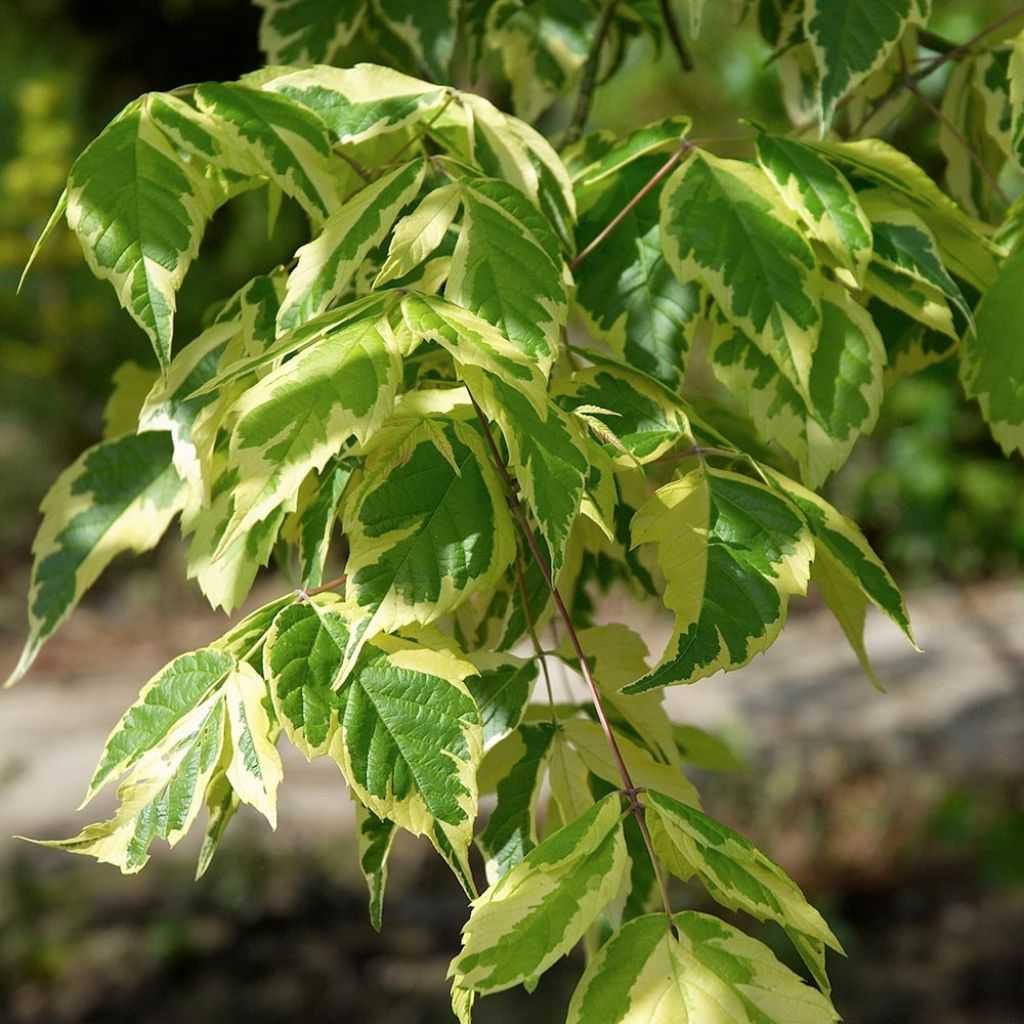

Acer negundo Aureovariegatum - Maple
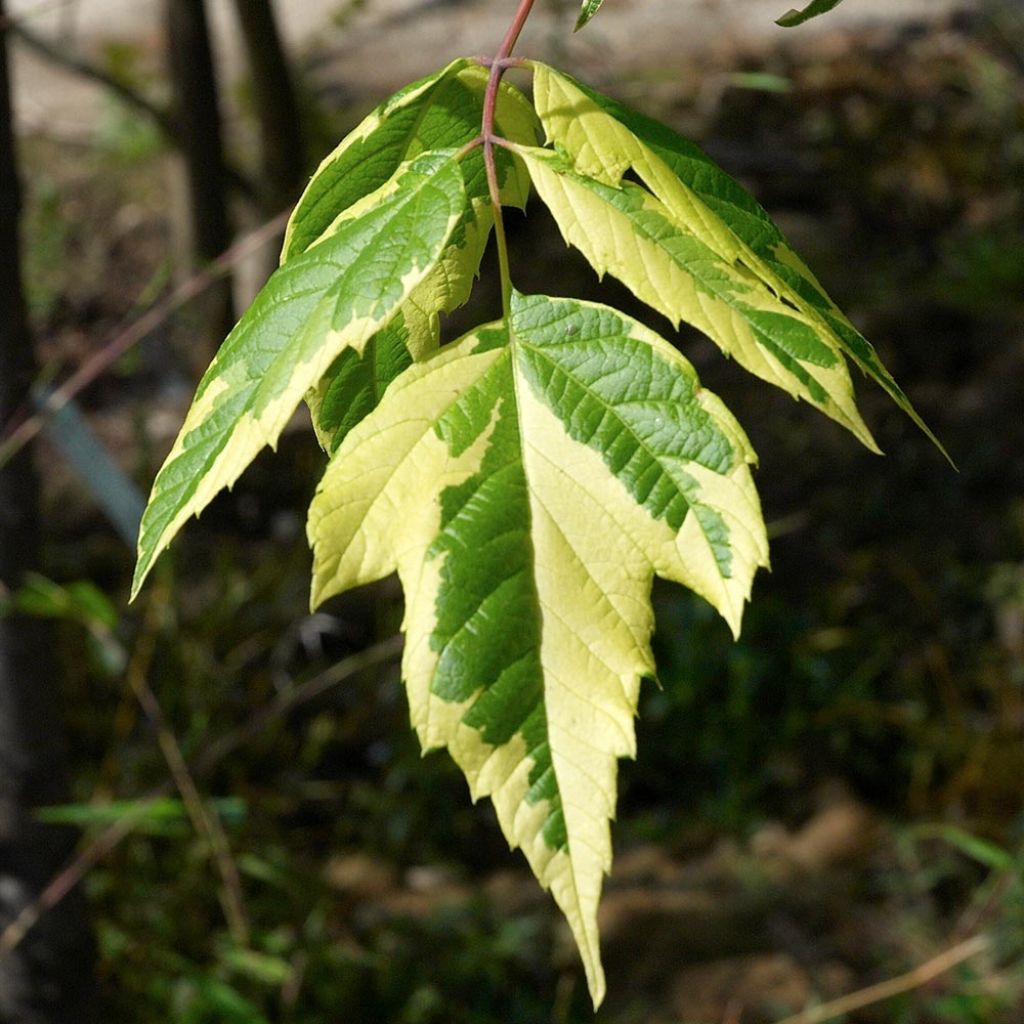

Acer negundo Aureovariegatum - Maple
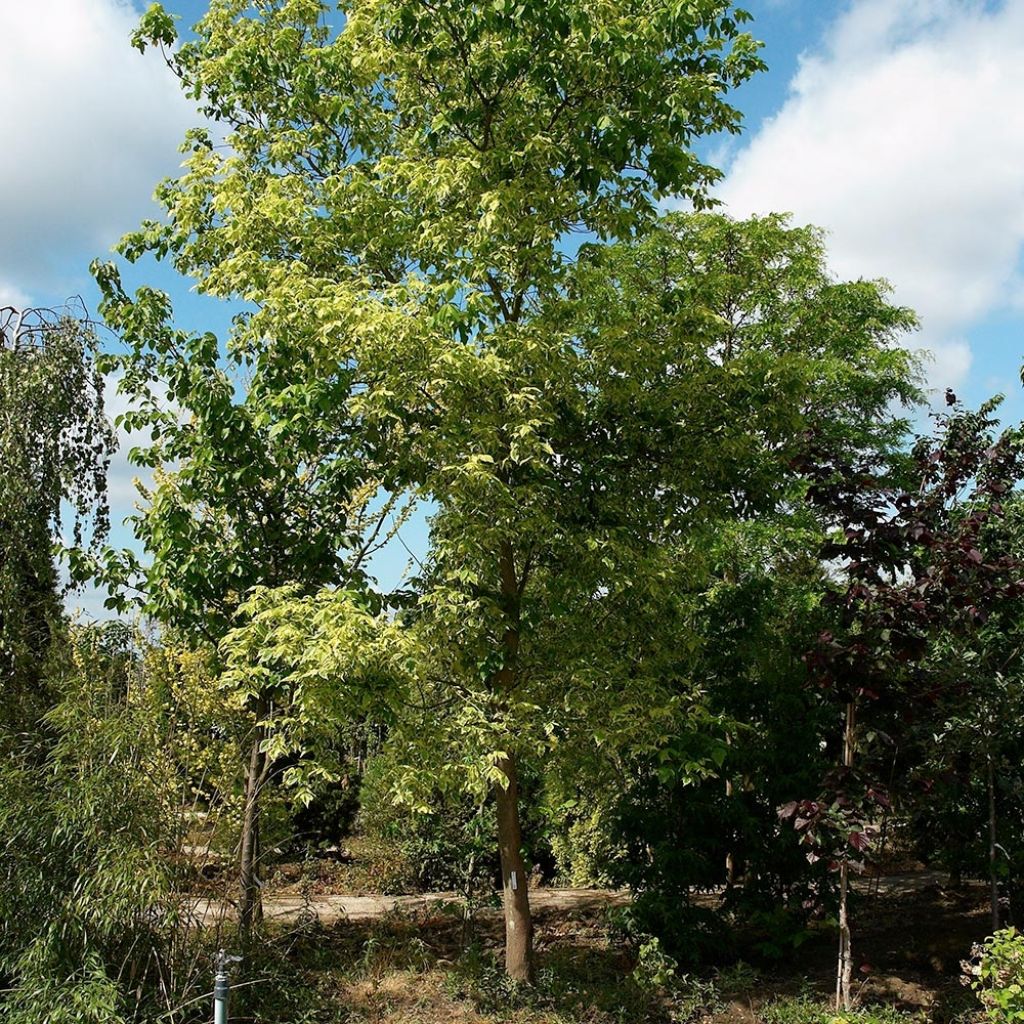

Acer negundo Aureovariegatum - Maple
Acer negundo Aureovariegatum - Maple
Acer negundo Aureovariegatum
Box Elder, Ash-leaved Maple, Manitoba Maple
Why not try an alternative variety in stock?
View all →This plant carries a 24 months recovery warranty
More information
We guarantee the quality of our plants for a full growing cycle, and will replace at our expense any plant that fails to recover under normal climatic and planting conditions.
From €5.90 for pickup delivery and €6.90 for home delivery
Express home delivery from €8.90.
Delivery to Corse prohibited: UE law prohibits the import of this plant from mainland France to Corse as part of the fight against Xylella fastidiosa. Please accept our sincere apologies.
More information
Does this plant fit my garden?
Set up your Plantfit profile →
Description
Acer negundo 'Aureovariegatum' is another variety of maple with variegated ash-like leaves. This variety's leaves are widely and randomly edged with bright yellow to cream, sometimes tinged with pink on young shoots. It is valued for its flexible habit, its almost white young wood, and its slightly smaller growth compared to the species. It is a highly decorative tree from spring to autumn: place it prominently in the garden and don't hesitate to prune it to encourage the production of colourful young shoots. This wonderful maple prefers partial shade to protect its foliage from sunburn.
Acer negundo, also known as Box Elder, American Maple or Negundo Maple, belongs to the Sapindaceae (formerly Aceraceae) family. It is native to the western United States and Virginia, but can be found as far south as Florida, as well as in Canada and Quebec. This robust, light-loving species prefers the vicinity of watercourses and wetlands, but tolerates somewhat dry summers once established. It prefers clay-limestone soils, but can adapt to a wide range of soils that are not too acidic. In nature, Acer negundo forms a wide-crowned tree, reaching a height of 15m (49ft). It is a deciduous tree that loses its leaves in autumn.
The 'Aureovariegatum' variety rarely exceeds 6 to 7m (20 to 23ft) in height and 5 to 6m (16 to 20ft) in width if left unpruned. It can easily be maintained at around 3m (10ft) in all directions, which also encourages the plant to produce decorative rose-coloured young shoots. This small tree has a relatively short and stout single trunk, or sometimes multiple trunks, and relatively low branches if it has enough space. If surrounded by other shrubs or trees, it will tend to grow taller in order to reach the light. Its habit is naturally spreading, somewhat irregular, supported by thin and fragile, brittle branches. Its rough, grey-ash bark cracks over time, taking on a darker grey tone. The young branches are greenish-blue and covered with a white bloom. The leaves, 5 to 10cm (2 to 4in) long, are divided into 3 to 9 ovate leaflets with pointed tips and very toothed edges. They are randomly maculated and bordered in yellow on a bright green background, and turn yellow before falling. The inconspicuous flowering occurs in April-May, at the same time or slightly before the development of the young leaves. It takes the form of thick clusters of female flowers, which are slightly yellowish-green, and long filamentous male flowers. The flowers are followed by clusters of winged fruits called samaras, measuring 3 to 5cm (1 to 2in) in length. The shrub is capable of flowering and fruiting from the age of 3 years.
Acer negundo 'Aureovariegatum', which has somewhat brittle wood, only requires moist soil and a location sheltered from strong winds. It is ideal at the base of large trees to create a medium-sized vegetative screen or to brighten up a corner of the garden. It requires less water than Salix integra 'Hakuro-nishiki' (Dappled Willow), but plays the same role in garden ornamentation. For example, plant it with a Purple Filbert or a Black Lace Elderberry; their dark foliage will highlight its extremely bright foliage. It also looks good as a standalone tree in a medium-sized or even small garden, as long as it is regularly pruned to control its size.
Tip: Remove entirely green branches (sort of suckers) that often spoil its appearance.
Report an error about the product description
Acer negundo Aureovariegatum - Maple in pictures
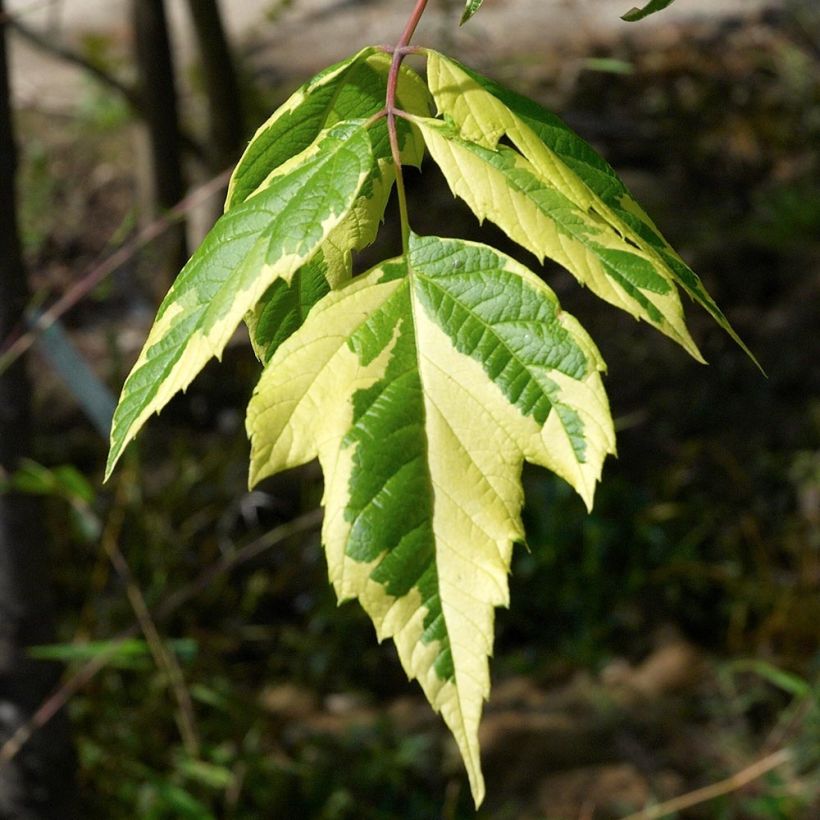

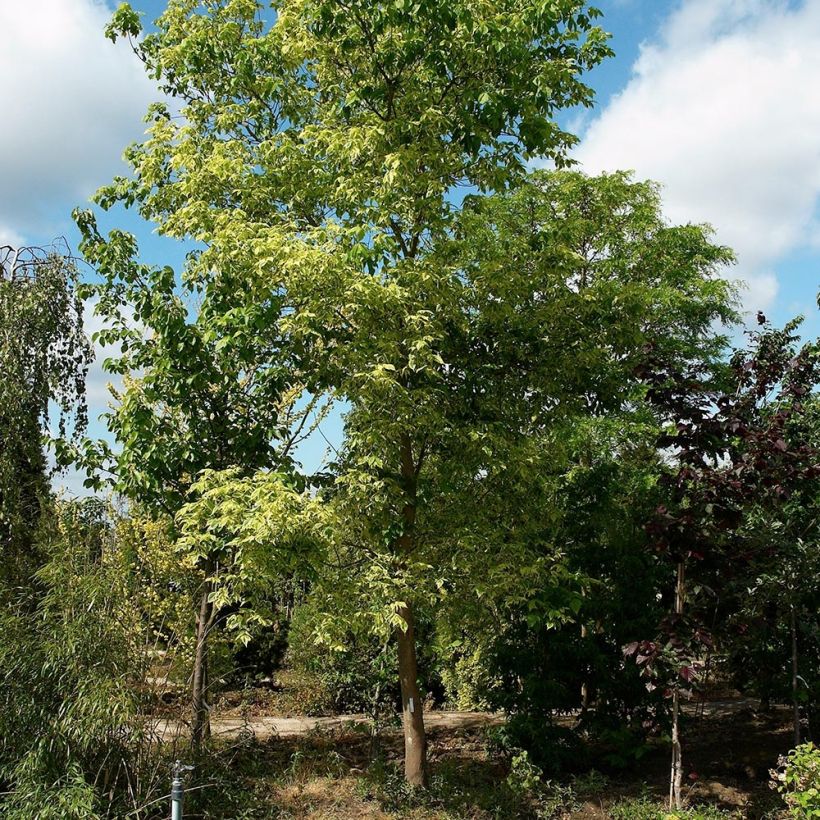

Plant habit
Flowering
Foliage
Botanical data
Acer
negundo
Aureovariegatum
Aceraceae
Box Elder, Ash-leaved Maple, Manitoba Maple
Cultivar or hybrid
Other Acer - Maple tree
Planting and care
Plant in spring or autumn in any fertile, deep, and moist soil in partial shade or a sunny position, but not in direct sunlight to avoid burning its foliage. Be cautious of strong winds as its wood is brittle. Keep the soil moist during the first two summers after planting. Mulching can be beneficial to maintain soil moisture. Prune young plants for training, and then every 3 years to balance the branches and maintain a graceful habit. Pruning also promotes the growth of colourful and decorative young shoots. Avoid pruning after December as sap rises early.
Planting period
Intended location
Care
This item has not been reviewed yet - be the first to leave a review about it.
Haven't found what you were looking for?
Hardiness is the lowest winter temperature a plant can endure without suffering serious damage or even dying. However, hardiness is affected by location (a sheltered area, such as a patio), protection (winter cover) and soil type (hardiness is improved by well-drained soil).

Photo Sharing Terms & Conditions
In order to encourage gardeners to interact and share their experiences, Promesse de fleurs offers various media enabling content to be uploaded onto its Site - in particular via the ‘Photo sharing’ module.
The User agrees to refrain from:
- Posting any content that is illegal, prejudicial, insulting, racist, inciteful to hatred, revisionist, contrary to public decency, that infringes on privacy or on the privacy rights of third parties, in particular the publicity rights of persons and goods, intellectual property rights, or the right to privacy.
- Submitting content on behalf of a third party;
- Impersonate the identity of a third party and/or publish any personal information about a third party;
In general, the User undertakes to refrain from any unethical behaviour.
All Content (in particular text, comments, files, images, photos, videos, creative works, etc.), which may be subject to property or intellectual property rights, image or other private rights, shall remain the property of the User, subject to the limited rights granted by the terms of the licence granted by Promesse de fleurs as stated below. Users are at liberty to publish or not to publish such Content on the Site, notably via the ‘Photo Sharing’ facility, and accept that this Content shall be made public and freely accessible, notably on the Internet.
Users further acknowledge, undertake to have ,and guarantee that they hold all necessary rights and permissions to publish such material on the Site, in particular with regard to the legislation in force pertaining to any privacy, property, intellectual property, image, or contractual rights, or rights of any other nature. By publishing such Content on the Site, Users acknowledge accepting full liability as publishers of the Content within the meaning of the law, and grant Promesse de fleurs, free of charge, an inclusive, worldwide licence for the said Content for the entire duration of its publication, including all reproduction, representation, up/downloading, displaying, performing, transmission, and storage rights.
Users also grant permission for their name to be linked to the Content and accept that this link may not always be made available.
By engaging in posting material, Users consent to their Content becoming automatically accessible on the Internet, in particular on other sites and/or blogs and/or web pages of the Promesse de fleurs site, including in particular social pages and the Promesse de fleurs catalogue.
Users may secure the removal of entrusted content free of charge by issuing a simple request via our contact form.
The flowering period indicated on our website applies to countries and regions located in USDA zone 8 (France, the United Kingdom, Ireland, the Netherlands, etc.)
It will vary according to where you live:
- In zones 9 to 10 (Italy, Spain, Greece, etc.), flowering will occur about 2 to 4 weeks earlier.
- In zones 6 to 7 (Germany, Poland, Slovenia, and lower mountainous regions), flowering will be delayed by 2 to 3 weeks.
- In zone 5 (Central Europe, Scandinavia), blooming will be delayed by 3 to 5 weeks.
In temperate climates, pruning of spring-flowering shrubs (forsythia, spireas, etc.) should be done just after flowering.
Pruning of summer-flowering shrubs (Indian Lilac, Perovskia, etc.) can be done in winter or spring.
In cold regions as well as with frost-sensitive plants, avoid pruning too early when severe frosts may still occur.
The planting period indicated on our website applies to countries and regions located in USDA zone 8 (France, United Kingdom, Ireland, Netherlands).
It will vary according to where you live:
- In Mediterranean zones (Marseille, Madrid, Milan, etc.), autumn and winter are the best planting periods.
- In continental zones (Strasbourg, Munich, Vienna, etc.), delay planting by 2 to 3 weeks in spring and bring it forward by 2 to 4 weeks in autumn.
- In mountainous regions (the Alps, Pyrenees, Carpathians, etc.), it is best to plant in late spring (May-June) or late summer (August-September).
The harvesting period indicated on our website applies to countries and regions in USDA zone 8 (France, England, Ireland, the Netherlands).
In colder areas (Scandinavia, Poland, Austria...) fruit and vegetable harvests are likely to be delayed by 3-4 weeks.
In warmer areas (Italy, Spain, Greece, etc.), harvesting will probably take place earlier, depending on weather conditions.
The sowing periods indicated on our website apply to countries and regions within USDA Zone 8 (France, UK, Ireland, Netherlands).
In colder areas (Scandinavia, Poland, Austria...), delay any outdoor sowing by 3-4 weeks, or sow under glass.
In warmer climes (Italy, Spain, Greece, etc.), bring outdoor sowing forward by a few weeks.

































